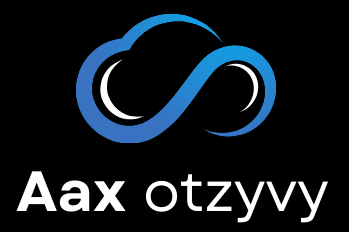
Transform your content with a smart ai blog writer
Unlock faster, smarter content creation with AI-powered tools that transform how blogs come to life. Leveraging AI blog writers helps businesses scale output, maintain consistent quality, and save valuable time without expanding teams. Discover how integrating intelligent automation into your content strategy can boost engagement, improve ROI, and keep your messaging sharp and relevant in a competitive digital landscape.
Essential AI Blog Writing Tools and What Users Should Expect
The market for ai blog writer solutions has rapidly expanded in 2025, meeting the demand for faster, scalable, and more consistent content production. These platforms combine automation, real-time collaboration, and adaptability across sectors—ranging from startups to established enterprises. Leading tools handle everything from topic ideation to keyword research, guided drafting, SEO optimization, content scheduling, and even social media integration. Their ability to adjust length, language, and style means businesses can create both concise announcements and in-depth analyses effortlessly.
A voir aussi : How can AI be used to enhance the precision of financial risk assessment tools?
Users should expect several key features from modern ai-powered article generators. Automation stands at the center, cutting manual input and transforming simple prompts into structured outlines or full-length drafts. Content quality control is enhanced by embedded suggestions, plagiarism checkers, and tone adjusters that adapt messaging to brand voice or target audiences. Integrated SEO optimization tools now suggest focus keywords, analyze readability, and recommend enhancements for top search rankings.
True efficiency emerges as these ai blog writing tools streamline multi-stage blog post creation—producing drafts in minutes, enabling team feedback, and supporting multilingual content. This automation means businesses can maintain high publishing frequency and consistency, directly boosting engagement and reach. The addition of analytics and customization options, from post formatting to brand persona alignment, transforms blog writing from a slow process into a powerful lever for business growth.
A voir aussi : What are the key considerations for developing a secure AI-powered loan approval system?
Comparative Analysis of Leading AI Blog Writing Platforms
Precision and recall calculations for ai blogging platforms comparison reveal clear trends. When assessing HubSpot, Grammarly, and Marblism Penny, each excels on differing parameters crucial for bloggers.
HubSpot’s ai blog text generators unify blog writing, CRM, and marketing, ideal for startups scaling operations. HubSpot integrates ai writing assistants for bloggers with its Content Hub, supporting multilingual, SEO-optimized posts through prompts and automated outlines. Users benefit from built-in performance analytics to evaluate blog post efficacy and adjust strategies.
Grammarly offers one of the best ai tools for long-form blog writing focused on drafting, tone adjustment, grammar, and plagiarism detection. Users can generate full drafts, check content clarity, and experiment with tone, making it a versatile ai writing assistant for bloggers. It is especially effective for refining content for niche audiences, thanks to advanced correction and suggestion tools.
Marblism Penny stands out via targeted SEO optimization―boosting search rankings through learning and mimicking a brand’s voice. Penny’s ai blogging platforms comparison highlights its ability to double organic traffic within weeks. It automates idea generation, supports quality oversight, and adapts quickly to feedback for continuous SEO improvement.
For bloggers, understanding the core differences enhances platform selection: HubSpot emphasizes business automation, Grammarly focuses on precision and customization, while Penny excels at SEO-driven content scaling.
Integration of AI for Blog Content Quality and SEO
AI blog writing tools for SEO specialists power seo optimized ai content generation by automating keyword selection, plagiarism checks, and meta description creation. Using the Stanford Question Answering Dataset (SQuAD) approach, these tools target precision first—placing the most relevant keywords and entities in critical spots—then optimize recall by ensuring broad coverage of industry-related terms throughout the post. For efficiency and relevance, ai for enhancing blog SEO scans trending topics and search terms, then applies them to outlines, body text, and summaries.
The workflow typically unfolds in stages: AI to assist with blog keyword research identifies high-impact phrases, generates SEO-friendly outlines, and adapts article structures for optimal readability and engagement. Integrated plagiarism detection ensures originality, comparing each draft against extensive web sources.
Performance tracking is essential. AI blog writing tools for SEO specialists provide reporting dashboards, highlighting which posts convert traffic, improve time on page, or yield leads. Analytics allow AI to generate blog post meta descriptions matched to search intent while ensuring content quality never falters.
Through this multi-layered approach, ai for enhancing blog SEO and seo optimized ai content generation elevate content quality, streamline creation, and support measurable blog growth.
Pricing Structures and Accessibility in AI Blog Writing Tools
For those seeking affordable AI blog writing solutions, understanding the differences between free and paid tools is essential. Free AI writing tools for bloggers usually grant access to basic content generation, ideal for initial drafts and short posts. Features might include simple topic suggestion, limited text length, and basic grammar assistance. Many of the best free AI blog writers without signup offer a way to test capabilities instantly, making them popular for beginners or occasional users.
However, advanced features—such as extensive SEO optimization, precise tone adjustment, detailed analytics, or integration with project management software—are reserved for premium versions. This is where solutions designed as ai blog post writers without subscription and those providing top-rated ai blog writers free trials stand out. Startups and small businesses can experiment with functionalities before committing financially, which supports better decision-making.
AI writing tools free for beginners are especially useful for small teams focusing on volume and quick turnaround, but those with larger or specialized needs, including AI-assisted collaboration or advanced content personalization, should consider premium tiers. The flexibility to scale and access robust features means growing businesses are not limited by initial budgets, while still leveraging efficient, high-quality AI-driven content creation.
AI Content Customization, Collaboration, and Brand Voice
AI blog content personalization is driven by advanced algorithms that analyze your preferences, previous posts, and provided prompts. Tools such as Penny and similar AI-based blog drafts platforms use these inputs to tailor content structure, tone, and style, enabling consistent alignment with your designated brand voice. AI for consistent blog voice works by learning from feedback and previous interactions, helping ensure messaging remains uniform across campaigns—whether the tone is persuasive, technical, or informal.
Multilingual capability is a powerful feature in many AI blog content personalization systems. These platforms support content creation in over 20 languages, increasing your reach while preserving your brand’s unique style and message. AI-based content rewriting for blogs further refines drafts, adjusting length and complexity to suit different channels or audiences while retaining the original intent and voice.
Collaboration is seamless in modern AI collaborative writing for blogs. Users can draft, edit, and comment in real time, allowing teams, agencies, and influencers to coordinate effortlessly. Version control, draft approvals, and feedback loops are built-in, supporting workflow efficiency.
Continuous learning ensures that each interaction helps the AI model adapt to your brand’s evolving needs, further improving personalization and maintaining high-quality output tailored to precise requirements.
Evaluating Effectiveness, Usability, and Future Trends in AI Blog Writing
Evaluating AI blog writing effectiveness relies on clear metrics: engagement, lead generation, and tangible workload reduction. AI blogging platforms such as Penny by Marblism demonstrate substantial impact; user reports cite a 2X increase in organic traffic and 94% improved engagement using automated blog content writer tools. AI blog content analytics tools track comment rates, time on page, and click-throughs to measure effectiveness.
AI-powered blog content improvement tips focus on customizing posts for SEO and adapting tone. For small businesses, leveraging AI to create blog post outlines accelerates content planning and supports consistency—a common barrier when using AI to overcome writer’s block. The best AI content creation tools now suggest blog ideas based on trends, with AI-driven blog content trend analysis identifying topics most likely to succeed.
Limitations persist: some AI blog text generators struggle with niche tone or lack robust multilingual capabilities. However, new features continually emerge, including AI for blog post tone adjustment, automated post scheduling, and real-time multilingual creation. Seamless social media integration and content trend forecasting are transforming workflows. As these capabilities advance in 2025, practical applications for AI-managed content calendars and outline generation will enhance usability for every industry.
